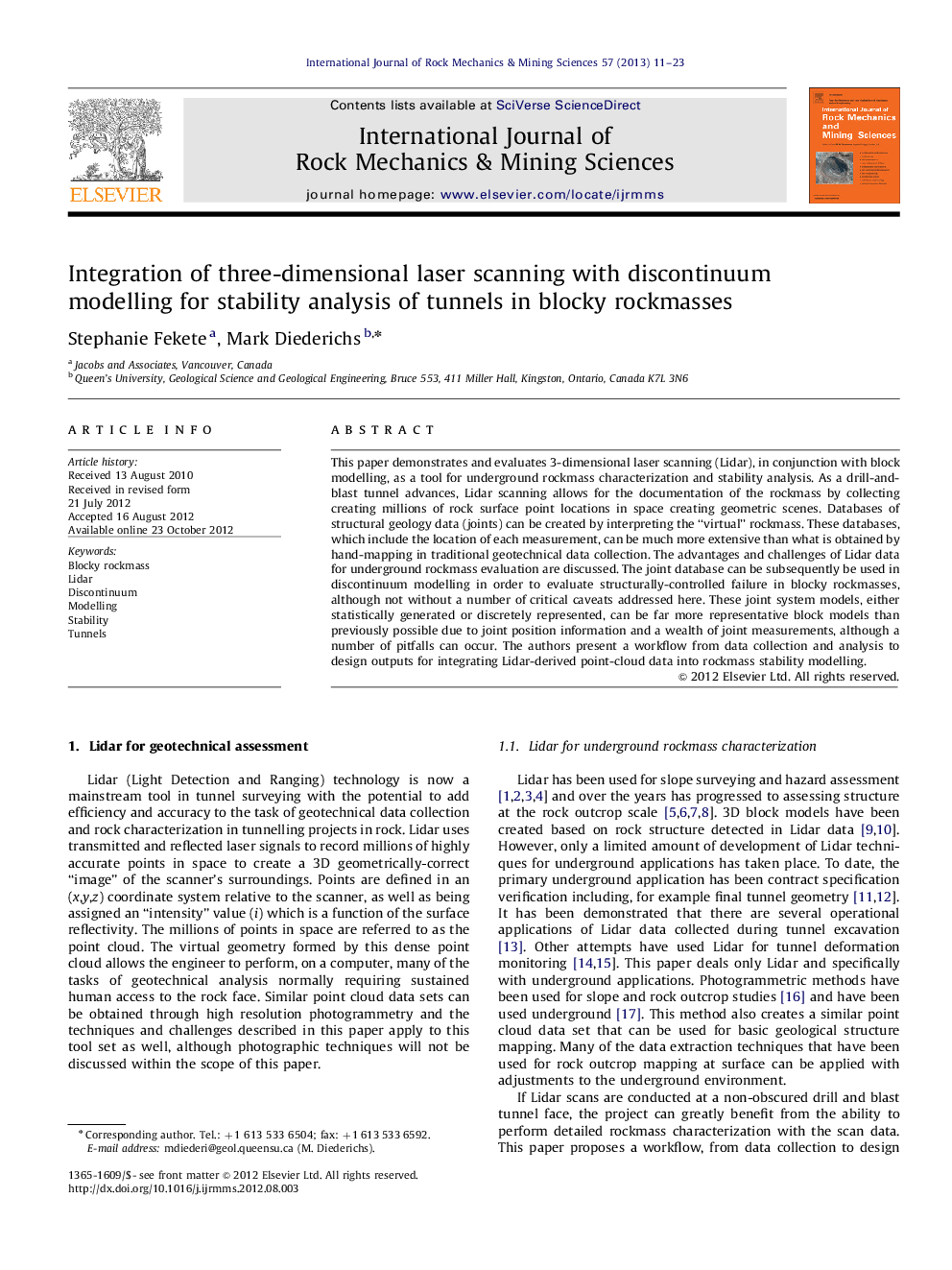| Article ID | Journal | Published Year | Pages | File Type |
|---|---|---|---|---|
| 809471 | International Journal of Rock Mechanics and Mining Sciences | 2013 | 13 Pages |
This paper demonstrates and evaluates 3-dimensional laser scanning (Lidar), in conjunction with block modelling, as a tool for underground rockmass characterization and stability analysis. As a drill-and-blast tunnel advances, Lidar scanning allows for the documentation of the rockmass by collecting creating millions of rock surface point locations in space creating geometric scenes. Databases of structural geology data (joints) can be created by interpreting the “virtual” rockmass. These databases, which include the location of each measurement, can be much more extensive than what is obtained by hand-mapping in traditional geotechnical data collection. The advantages and challenges of Lidar data for underground rockmass evaluation are discussed. The joint database can be subsequently be used in discontinuum modelling in order to evaluate structurally-controlled failure in blocky rockmasses, although not without a number of critical caveats addressed here. These joint system models, either statistically generated or discretely represented, can be far more representative block models than previously possible due to joint position information and a wealth of joint measurements, although a number of pitfalls can occur. The authors present a workflow from data collection and analysis to design outputs for integrating Lidar-derived point-cloud data into rockmass stability modelling.
► A workflow is presented for integrating Lidar data into geotechnical tunnel analysis. ► The paper provides for the construction of representative rockmass models. ► Techniques are outlined for analytically considering joint persistence and spacing. ► Models can be created through statistical reduction or discrete feature assignment.
